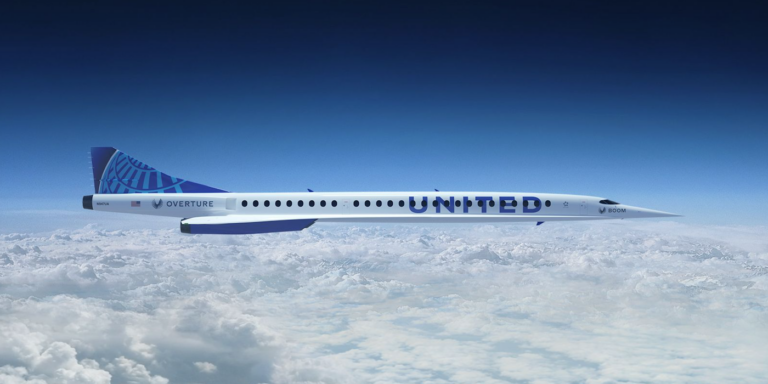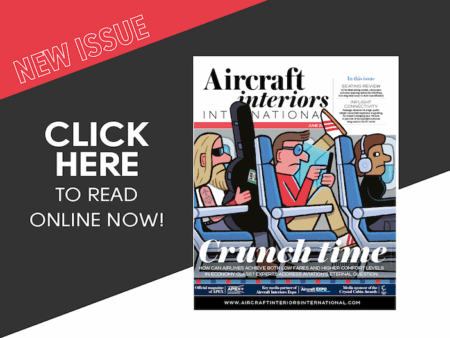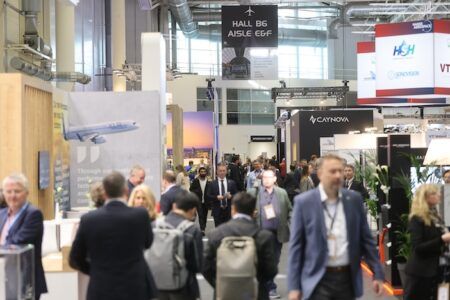On 26 November, 2003, when Concorde was retired, many thought aviation had taken a step backward. Few predicted a return of superonic commercial air travel, but it is beginning to look more likely, especially with the news in June 2021 that United Airlines has placed an order for 15 of Boom’s Overture supersonic jets, with options for an additional 35, with commercial flights slated to begin in 2029. United joins other major airlines in Boom’s order book (JAL has signed a pre-order for up to 20 aircraft, and Virgin Atlantic for up to 10).
One promising concept for supersonic passenger flights – the AS2, jointly developed by Airbus and Aerion – which was billed to arrive as soon as 2023, was canned in May 2021. However, with Boom advancing its work, and many other supersonic concepts in the pipeline, it’s time to prepare for a faster future that brings short-haul flight durations to long-haul travel. This is especially true as on January 6, 2021 the US Department of Transportation and the FAA issued a final rule to facilitate the safe development of civil supersonic aircraft, a rule intended to streamline and clarify procedures to obtain FAA approval for supersonic flight testing in the USA.
We spoke to some of the cabin design industry’s biggest names to find out what the one- to six-hour supersonic passenger experience might look like, given the massive increase in first and business class travel expectations since Concorde’s demise. They were free to let their imaginations run riot, with just two provisos: they had to think within the confines of a narrow-body fuselage, and they had to address the needs of wealthy passengers paying high fares (realistically the passenger demographic for the forseeable future).
Reach for the skies
So what can tomorrow’s supersonic travellers look forward to? “The speed of the aircraft will create a design brief of intrigue and excitement for these cabins. Nothing would be mass produced or seen in today’s cabin interiors; this is a ‘dare to dream’ cabin experience to create as a designer,” says Martin Darbyshire, CEO of Tangerine. “We are talking about a future experience that is totally stratospheric in terms of what we can imagine now.”
Specifically, Darbyshire envisions a cabin with no windows, which brings strength and weight advantages. Instead the walls and ceilings will be wrapped in large displays that create a blank canvas for the imagination, harnessing technology that will make today’s virtual reality look outdated. Going even further, the whole ceiling could become a projection system, making the onboard experience more about the virtual reality environment one chooses, rather than the hard, tangible experience.
Noting that it is not yet clear what sensation of speed passengers will feel in the cabin, Darbyshire adds that the thrill of the velocity may need to be communicated through the cabin experiences.
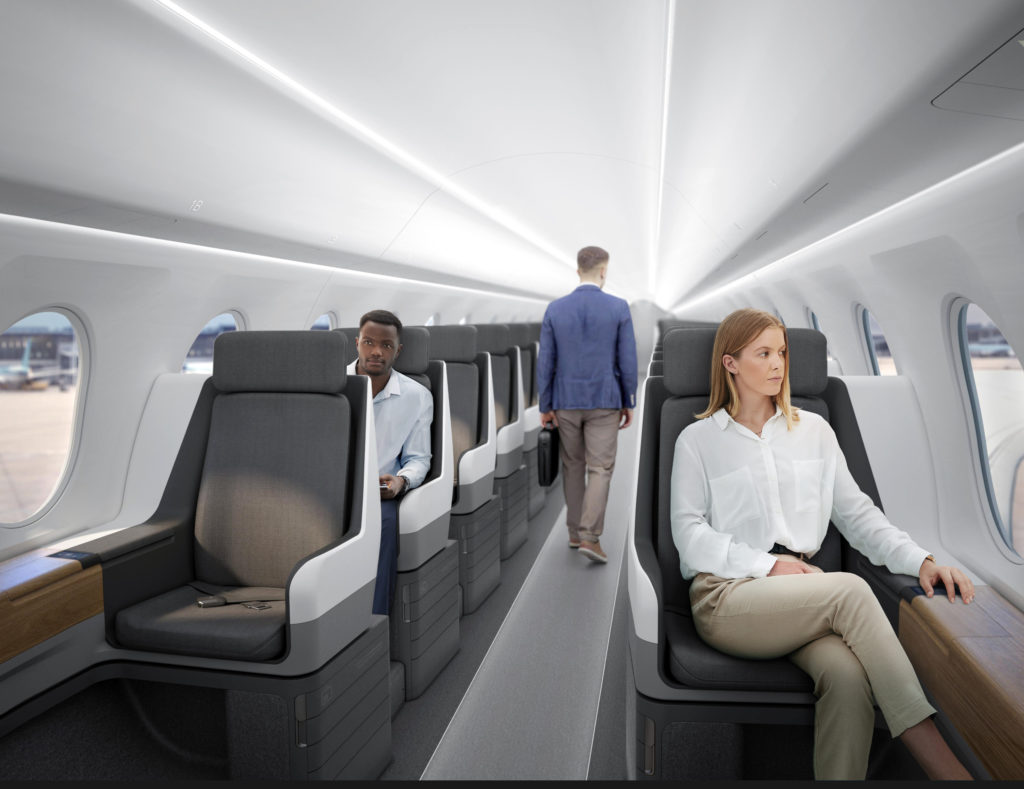
We also asked Brian Conner, formerly Teague’s creative director, for his opinions, and he sees a more organic style. “The grid feel of typical jets would likely be gone. Seating features, sidewalls and furniture would be seamless with the cabin architecture and will break up the cabin into more meaningful clusters. Windows, sidewalls, seats, lounging areas and private spaces could all be designed as one space.”
Such a clean, spacious, modern and lightweight environment would be an enjoyable experience, but Conner has a more ambitious vision: “An aircraft like this might make use of the vertical space in the cabin. Seating and rest spaces could be layered on top of one another, with an opportunity to make use of multiple floor levels.”

Feel the speed
One overriding sentiment among the experts is that supersonic flight is such an exciting prospect, it should be embraced within the passenger experience. While many of today’s luxury cabins aim to replicate the feel of a boutique hotel, supersonic travellers should feel they are part of a very special flying experience.
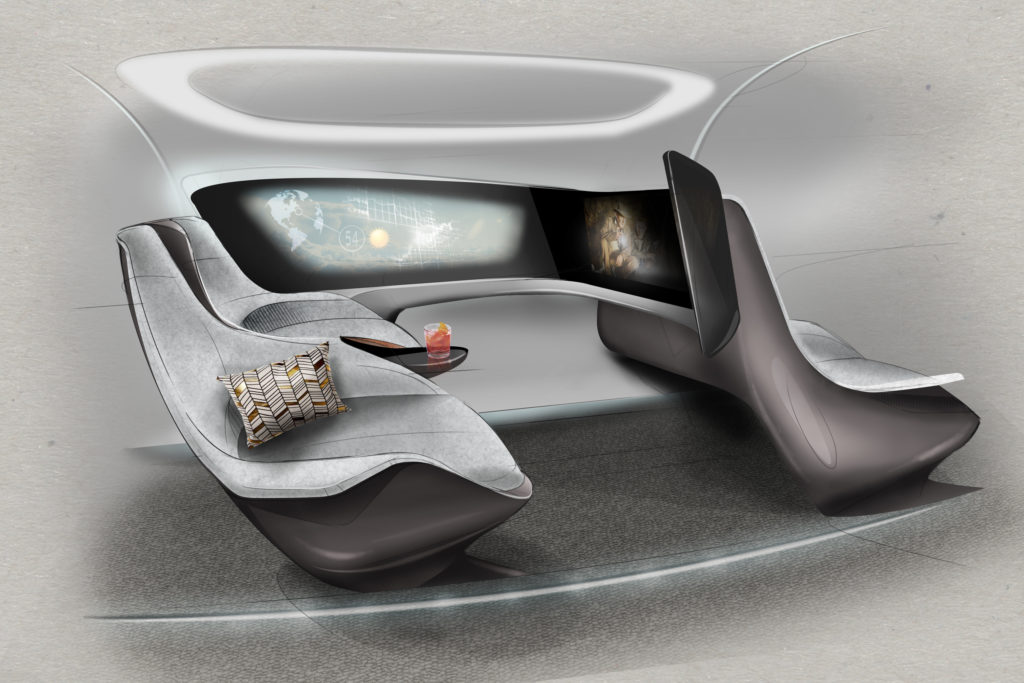
As Anthony Harcup, an associate at Acumen when we spoke (now senior director of airline experience at Teague) said, “Designing a contemporary supersonic interior is a very different brief from that of contemporary commercial and private jet interiors. Rather than distracting the passenger from the idea of flying, the supersonic flight itself is the experience. Like being a passenger in a Formula 1 racing car, or maybe a suborbital space flight, you are part of an elite club – experiencing flight at not only twice the altitude, but at Mach 2.”
Harcup felt that supersonic passengers should be fully engaged with the travel experience, and the seating environment should enable and enhance this. “There is the potential to reconfigure not only the fundamental layout of the tube, but also the service style and how the passengers might interact with their environment. There is a real opportunity to pilot groundbreaking new experiences that could influence not only commercial and private aviation, but into any and all transport interiors.”

Positive spin
Let’s consider the seating space, where passengers will spend most of their brief time on board. One thing all the design houses we spoke to had in common was a feeling that supersonic flyers will not require lie-flat beds, as they do not fit with the USP of these machines. There was a feeling that a premium economy pitch could be suitable, but while today’s premium economy seats would offer adequate comfort for supersonic missions, we want more.
“Passengers paying a top-end fare for a more limited footprint of living space will expect the same level of sophistication and product integration afforded to first and business class passengers on commercial flat-bed products – and amenities relevant to their flight experience should be equally thought through,” stated Harcup. “For example, integrating the surrounding aircraft architecture into the seating environment is currently only hinted at in a handful of first-class commercial products. This could be a highly relevant treatment for supersonic interiors, expressing the exclusive nature of the interior. This would help form a cocooned and dedicated environment for the passenger, creating the illusion that the window, sidewall and facing seatback are truly ‘theirs’ – exclusively designed elements of their living space.”
Harcup also suggested having seats that can rotate to enable face-to-face dining, and can also face the window so that one enjoy a cocktail and an incredible view with a travel companion – even if the view is virtual.
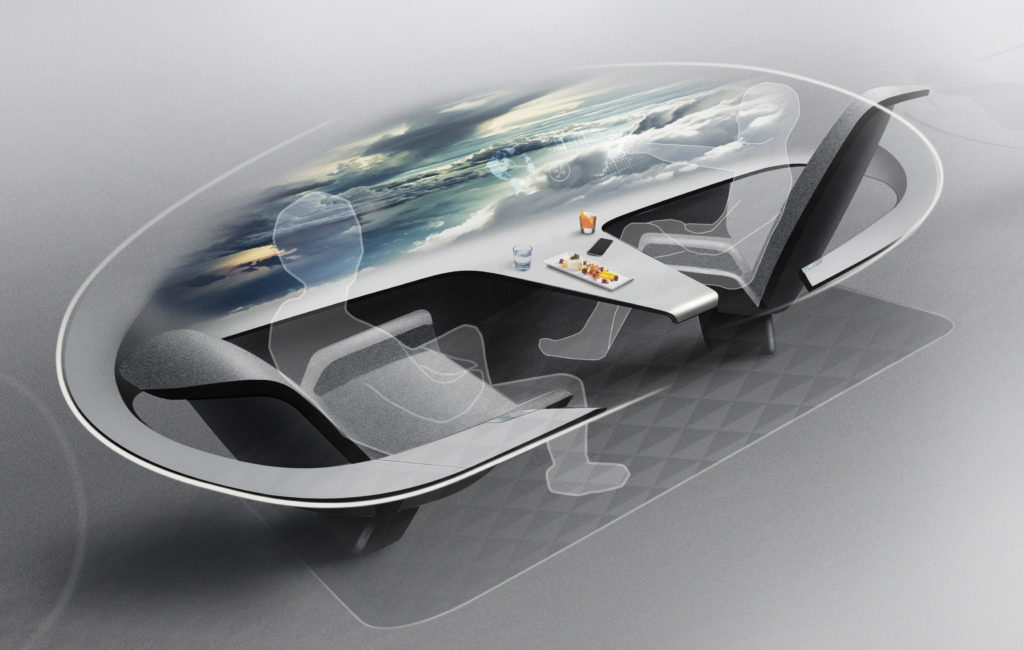
Peter Knapp, chairman and chief creative officer at Landor, is also keen to offer flexibility in the seating arrangements to give passengers liberty, with rotating seats giving them options to face forward on take-off, look out of the window when landing, and turn and face each other for dining.
“This might not afford the freedom found in some formats where a bar offers respite on long-haul routes, but it would easily redefine modes of traveling and offer a much needed variation, the uniqueness of which could command a premium. This simple system could offer social, work, sleep and sightseeing options in one design within the physical restraints.”
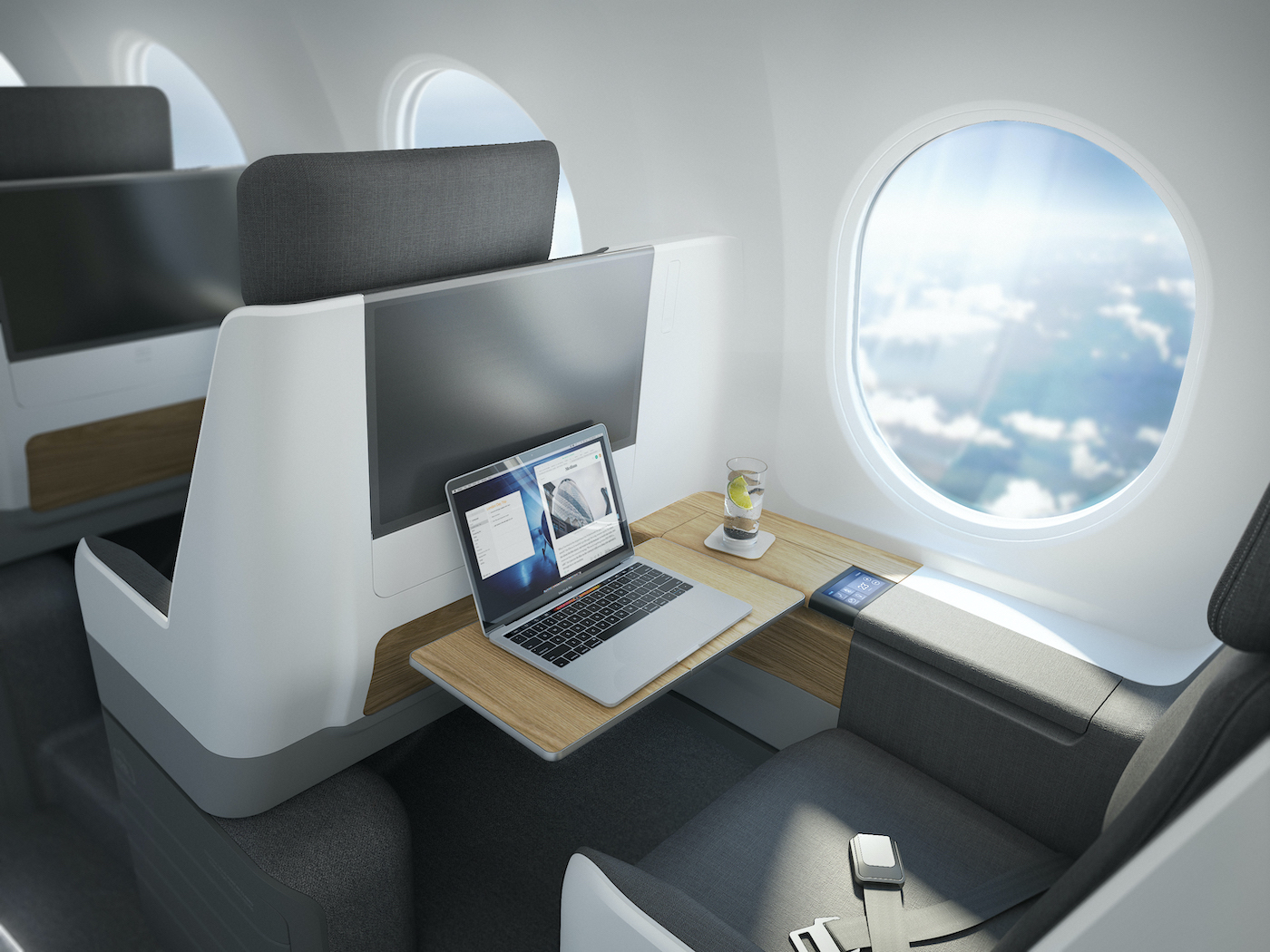
Ugur Ipek, founder of the Ugur Ipek Design agency, predicts a visually interesting cabin with an asymmetric LOPA of slightly differently styled seats, a layout that is flexible enough to offer reconfiguration options for passengers who want to make the experience their own.
This sense of personalisation is also predicted by Elliott Koehler, creative director at JPA Design, who wants to combine technologies to make an ultra ‘smart’ product that enables an airline to offer a space tailored to suit customers’ needs for that specific journey.
“This is necessary as the limitations in size and weight will preclude the usual multifunctional bed, lounge and office that a first-class suite provides. Rather than offering everyone a compromised choice to cover all eventualities, the airline can offer a far higher-quality tailored space and service to suit the passenger’s needs,” Koehler explains.
Simply phone the airline ahead of your flight – or have your people call their people – and the right environment for your journey will await you. Want to relax and enjoy the view? No problem, the seat will be preset to suit. Need to work all journey? The fastest desk in the world will be waiting. Don’t need IFE? It won’t be uploaded. Not hungry but want champagne? It’s being chilled to perfection. “This will drive a smart, super light but configurable cabin, all enabled by getting the passenger to buy into the ethos of the experience,” Koehler adds.

For an airline view we spoke to Cristian Sutter, a cabin design specialist with experience at Thomson Airways, British Airways and Jet Aviation Basel (and now CEO of Avensis Aviation), who predicts seating with a footprint comparable to today’s premium economy, but with a little enhancement through the use of ergonomics with flexible and adaptable geometry, built-in cooling and heating systems, a massage function, and headrest-mounted noise-cancelling systems.
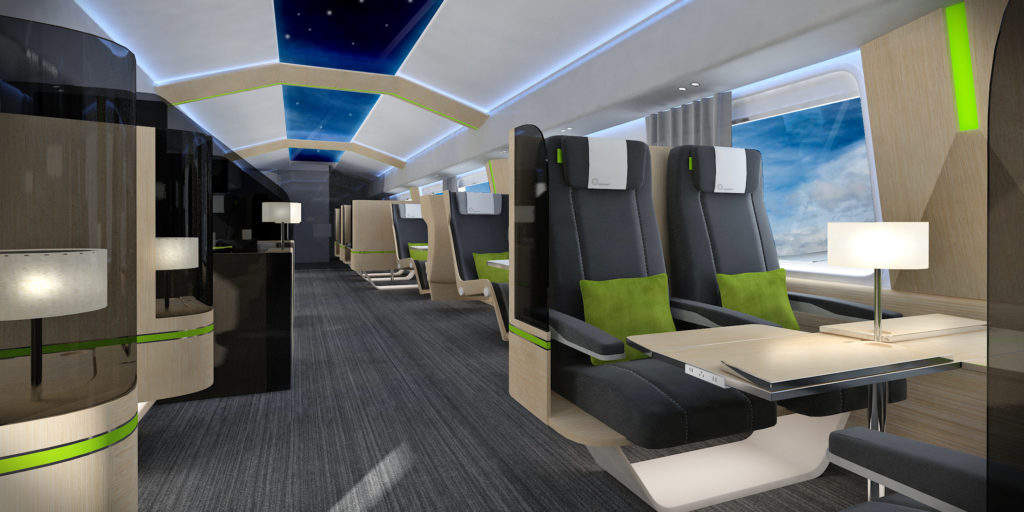
Tangerine’s Martin Darbyshire also predicts an offering of something close to premium economy, but with more comfort and offering the privacy that Forbes List flyers might demand. Joan Collins was reported to have paid for the front four seats on Concorde just to achieve privacy in the small cabin, so how can the fabulous flyers of this world enjoy tomorrow’s supersonic travel without having to quadruple their flight costs?
Darbyshire suggests staggered seating as an option and that sleeping comfort will be important for overnight flights of six hours – San Francisco to London, say. For flights closer to three hours, he thinks that reclining seats, with a gimbal mechanism if there is a vertical climb, would seem appropriate.
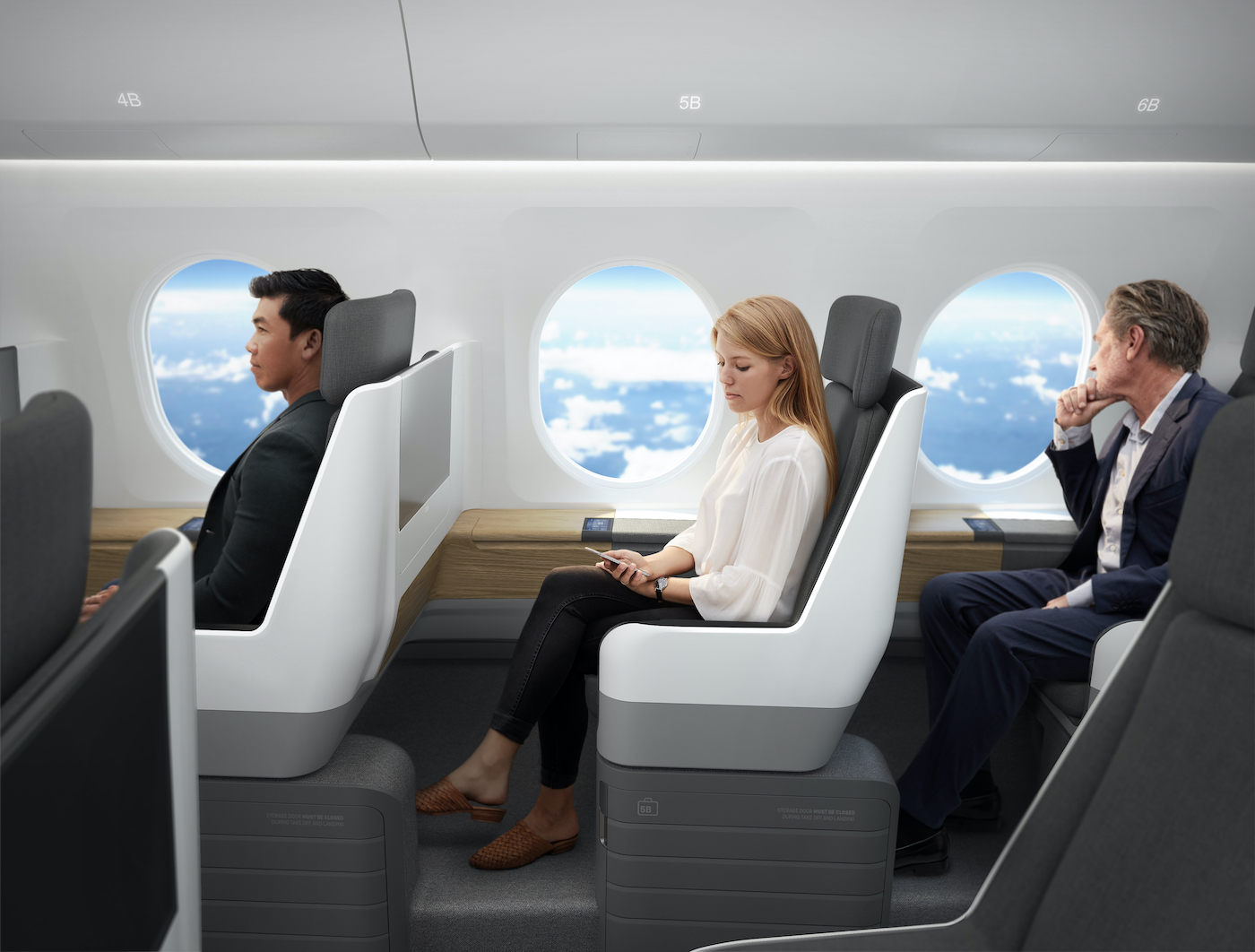
The cabin IS the IFE
The experience of supersonic flight will be a greater attraction than even the most gripping of movies. Entertainment options are necessary though, and the IFE systems on board these aircraft could take a new direction, making the passenger part of the action, rather than being a passive observer.
There is clear potential via previous suggestions such as AMOLED walls and ceilings, which could show a feed from outside to make you feel like an aviator, and visual sonic booms as the aircraft accelerates through the sound barrier. As an excited Harcup said, “With developing organic OLED technology, it might be feasible to propose a living interior – imagine a 360° view of the curvature of the earth from 60,000 feet – a flying planetarium!”
This would be an amazing prospect for some, but terrifying for others – perhaps best restricted to a dedicated section of the cabin for enthusiasts. “The experience may not necessarily be about speed, but might reflect a new expression of travel through virtual reality or similar technologies not yet defined,” says Darbyshire. “The interior could be about enhancing the travel experience through stargazing, or relate more to space-age technology through virtual tours. Using modern technology creatively would mean you could customise the experience for different passenger types, from the wealthy thrill-seeker to the time-poor business executive.”
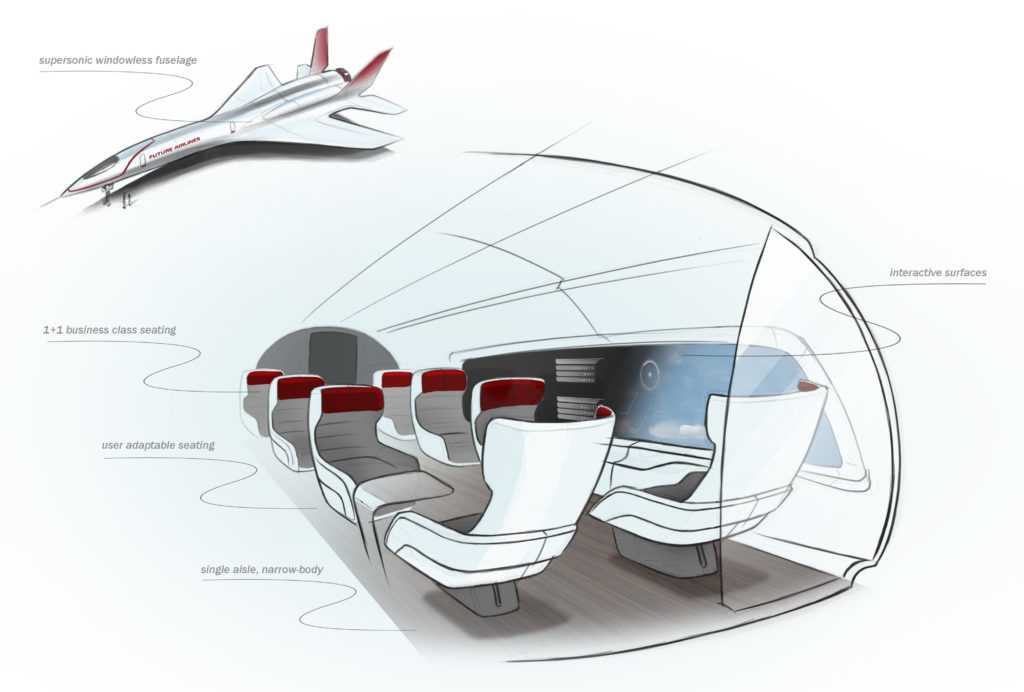
One view most of our experts have in common is a view that ‘traditional’ IFE content would be offered via streamed content or pre-loaded tablets, rather than seatback displays, and given that the captains of industry likely to be on board, reliable and powerful connectivity to keep in touch with the boardroom is a must.
Speed aside, the most exciting thing about supersonic travel is that it could embrace the wonder of flight within the passenger experience, with everything geared toward involving flyers in the journey rather than distracting them from it. If you want lie-flat beds, 32in IFE and showers, take the slow plane – the supersonic experience will be too exciting to sleep through.


